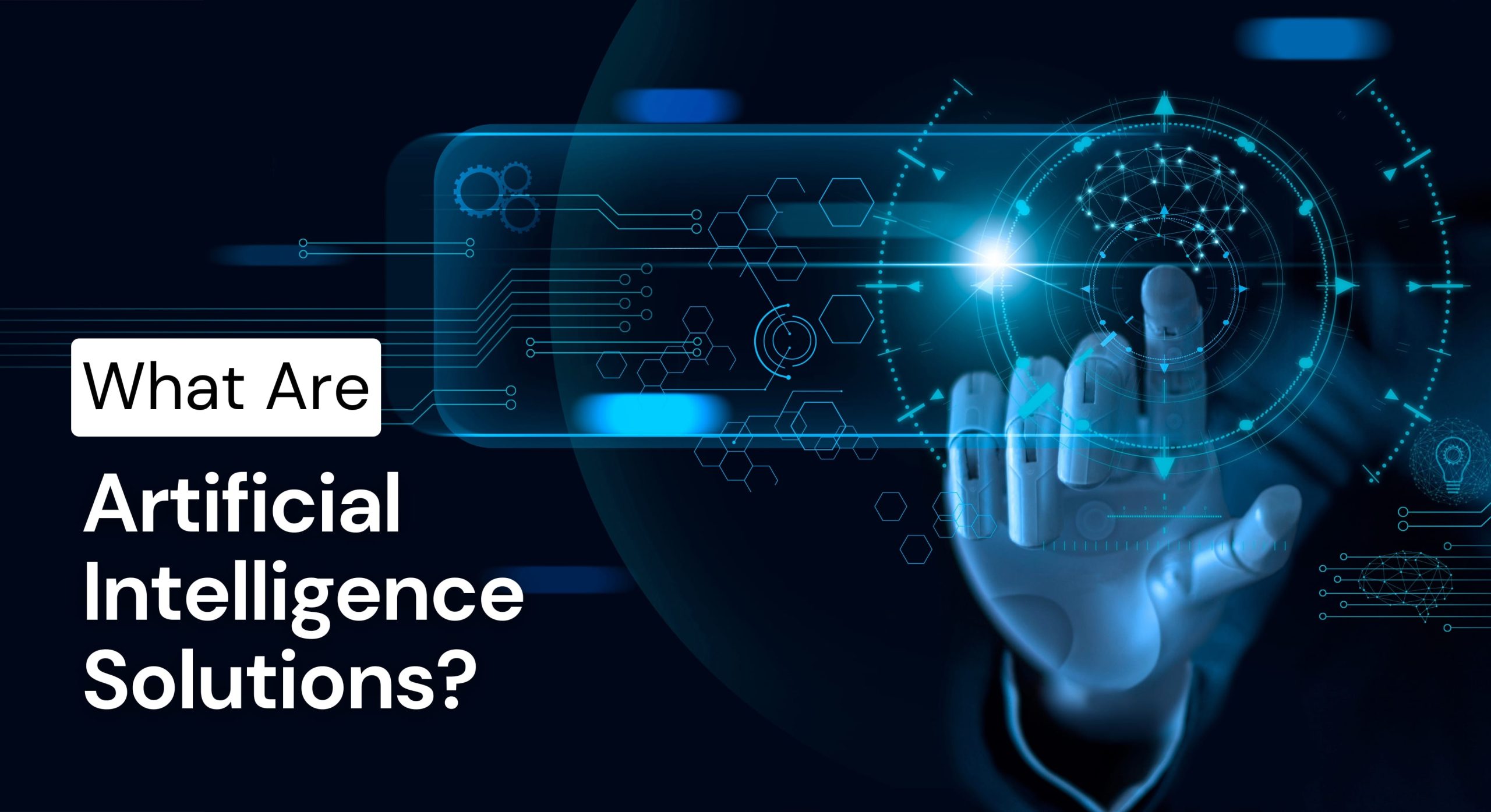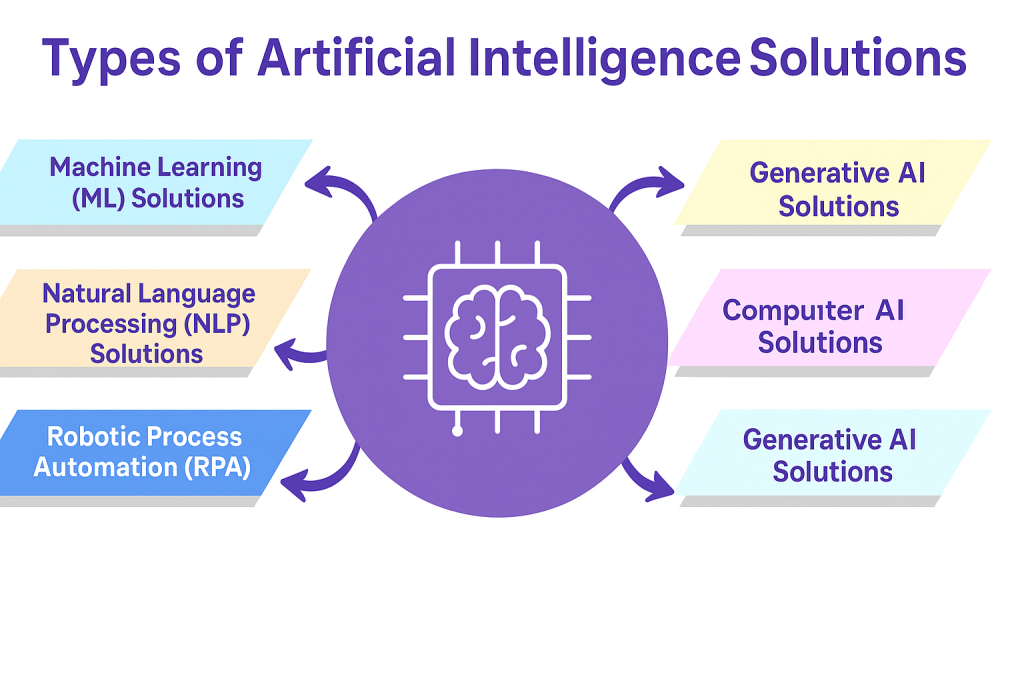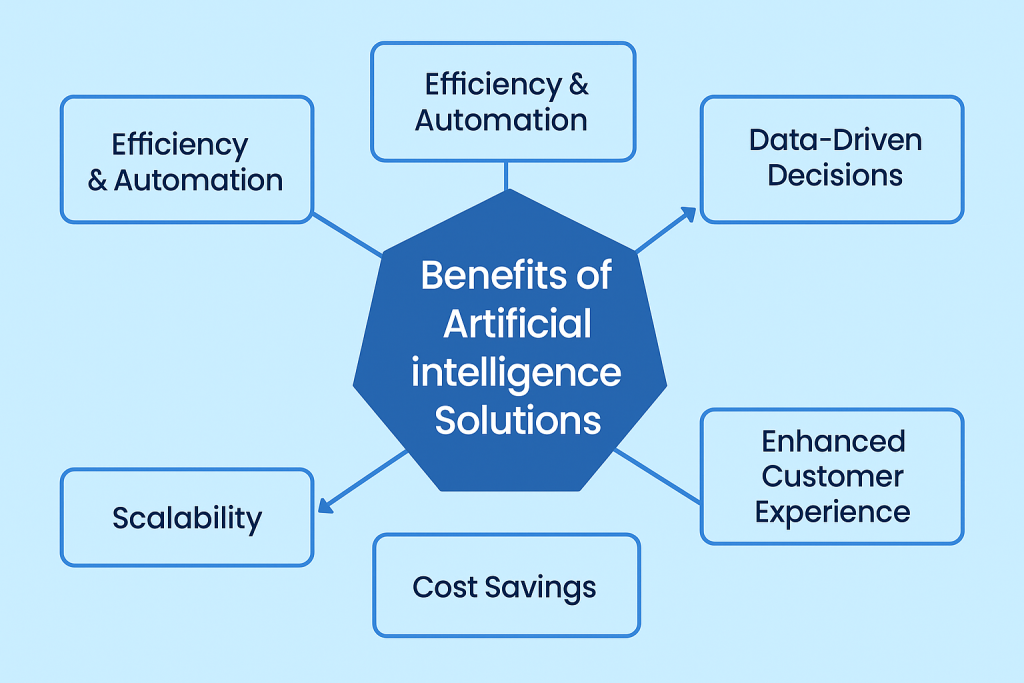
Artificial Intelligence Solutions have moved from sci‑fi to standard powering product recommendations, fraud detection, and instant transcription across the apps used every day. According to the McKinsey Global Survey, 78% of organizations report using AI in at least one business function, and 71% regularly use generative AI, underscoring that AI is now core to how modern business operates. Beyond current users, roughly 82% of companies are either using or actively exploring AI, reflecting a broad, sustained shift toward AI-enabled operations.
This guide explains what AI solutions are, how AI works, and how to apply them minus the jargon so it’s easier to capture real results fast.
At its core, an Artificial Intelligence Solution is a technology or system that uses AI techniques—like machine learning, deep learning, and natural language processing—to solve specific problems or automate tasks.
Think of it like hiring a digital “brain” that can learn from data, make decisions, and even improve over time without needing constant human intervention.
While Artificial Intelligence (AI) is the broader science of building intelligent machines, AI solutions are the practical, ready-to-use applications that companies implement to achieve measurable results.
Behind every slick AI-powered tool is a structured process. Most Artificial Intelligence Solutions follow these steps:
Example: Imagine a logistics company that wants to reduce delivery delays. An AI solution could analyze past delivery routes, traffic data, and weather patterns to recommend optimal schedules—saving time and money.
Not all AI is built the same; each type targets a distinct business need, from predictions to personalization.
Example: AI writing assistants producing blogs, ads, or reports.

Why are so many companies—from startups to Fortune 500 giants—adopting Artificial Intelligence Solutions?

Example: Netflix saves millions annually by using AI to recommend shows, reducing customer churn. With smarter, scalable solutions from Gignaati, you can bring similar efficiency to your business.
While Artificial Intelligence Solutions can be game-changers, they’re not magic wands. Businesses should be aware of potential challenges:
Addressing these issues means adopting transparent practices, ongoing training, and ethical AI frameworks.
Selecting the right AI tool can feel overwhelming—but following these steps can help:
When comparing features and tools, it helps to know what’s available. Discover AI-powered tools in our marketplace to find solutions tailored to your needs.
The AI landscape is evolving fast. By 2024, over three-quarters of organizations reported using AI, reflecting a sharp rise from 55% the year before. Here’s where things are headed:
Search engines are also changing. Search Generative Experience (SGE) and Answer Engine Optimization (AEO) mean your AI-powered content must directly answer user questions—because search engines themselves are becoming AI-driven.
To see how these AI solutions drive change in real-world platforms, check out how they’re transforming freelance marketplaces.
Artificial Intelligence Solutions aren’t just a tech trend—they’re becoming a business necessity. From automating mundane tasks to unlocking deep insights from data, AI is helping companies work smarter, not harder.
The key is understanding what’s possible, identifying where AI can truly add value, and starting small before scaling. Whether you’re a small business owner or part of a global enterprise, now is the time to explore AI’s potential.
A chatbot that answers customer queries 24/7 using natural language processing.
Automation follows pre-set rules; AI learns and adapts over time.
Costs vary widely—cloud-based tools can be surprisingly affordable.
Absolutely—many AI tools are scalable and budget-friendly.
Data analysis, AI system management, and a basic understanding of machine learning principles.
Explore Gignaati.com – where top AI innovators showcase verified AI agents for real-world solutions.
© 2025 Gignaati is a product of Smartians.ai. All rights reserved.